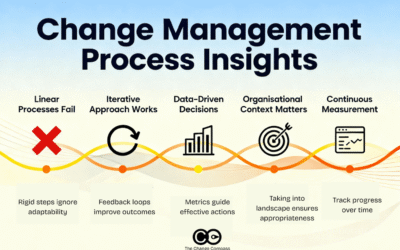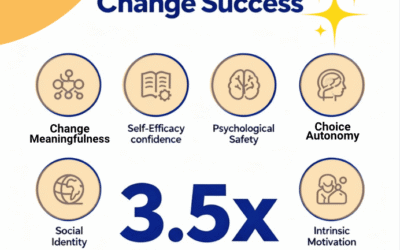“A recent survey by the Change Management Institute (Employment Study) in 2015 indicated that 77% of all Change Management roles in Australia are contract roles. Are you surprised by this figure? Would you have expected this figure to be lower or higher? And why is it that most Change roles here are contract roles?
Many of you will state that obviously Change roles are there to help the company design and implement a change initiative and since changes are time-bound, it makes sense to employ a contract Change expert only for this duration. Others will call out that the flip side to this approach is that change capability comes and goes and the organization is not really able to build its inherent ability to.
Let’s look at how some of the most admired companies approach this. For those companies that are consistently listed the most admired global companies such as Intel, Apple, Microsoft, Johnson & Johnson, etc., the approach is very different. For these organisations there is not a lot of ongoing contract Change roles. Instead, the leadership and operations uptake the responsibilities of driving change. And yes, this includes project work where folks work on change impact assessments and implementation planning.
Take for example, at Intel the company typically redeploys its talent regionally and globally and where needed specialists may be brought in to lead or support change initiatives such as a new system implementation or new strategy. On the ground, operations leads are identified within the business and are expected to drive, support, communicate and monitor the progress of the initiative. Change capability is built into ongoing management and team development, though there are also internal training courses focused specifically on Change. This model drives significant business ownership and avoids a lot of the buck passing and challenges of reaching full benefit realization compared to the mainly contractor model.
A key requirement of this model is that the business needs to be very clear with its key focus areas in driving change and not be inundated by too many initiatives. The leadership and operational leads constantly review a dashboard of initiatives and are clear with their impacts as well as the prioritization of the initiatives.
I’m not advocating that companies do not need Change contractors at all but we need to be clear what our operating model is to build change capability. Are we only seeking a pair of hands as needed to do project work? Or do we have a more strategic approach to design change know-how within the organization? What has been your experience in designing a Change Management model that builds inherent capability?
The Change Compass is an industry-first change management tool that helps organisations manage change impacts through data vs opinions.






